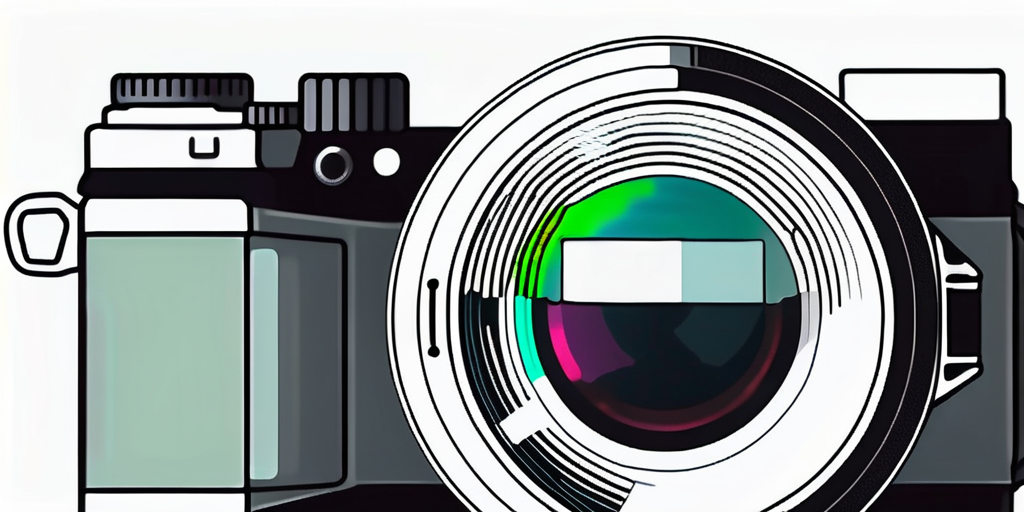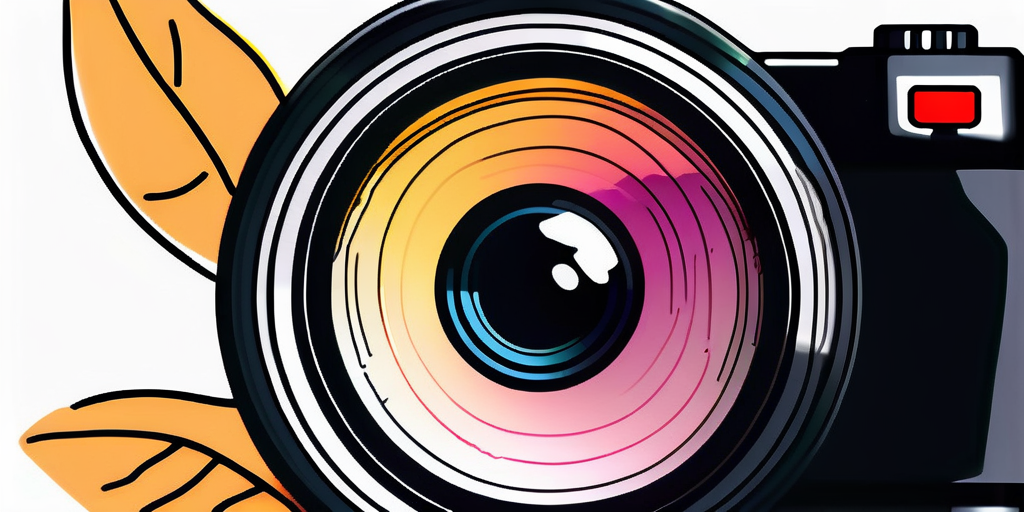
In the world of photography, the concept of depth of field plays a crucial role in enhancing focus and creating captivating images. Understanding how to utilize this technique effectively can make a significant difference in your photography journey. In this article, we will delve into the concept of depth of field, discuss its technical aspects, provide practical tips for using it, and highlight common mistakes to avoid.
Understanding the Concept of Depth of Field
Before we dive into the technical aspects, let's define what depth of field really means in photography. Depth of field refers to the area in an image that appears sharp and in focus. It is influenced by various factors, including aperture, focal length, and distance.

When considering depth of field, it's essential to understand how different apertures impact the sharpness of an image. A wider aperture (small f-stop number) results in a shallower depth of field, ideal for portraits or close-up shots where you want the subject to stand out against a blurred background. On the other hand, a narrower aperture (larger f-stop number) increases the depth of field, keeping more of the scene in focus, suitable for landscapes or group shots where you want everything from foreground to background to be sharp.
Defining Depth of Field in Photography
Depth of field is the distance between the nearest and farthest objects in a scene that appear acceptably sharp in an image. It helps to create a visual hierarchy by selectively focusing on the subject while blurring the background or foreground elements, which is crucial for capturing captivating moments at premier destinations for exquisite photography services in Michigan such as Wedding Venues In Northville Mi.
Moreover, the focal length of the lens also plays a crucial role in determining depth of field. A longer focal length, such as a telephoto lens, tends to compress the scene and reduce the depth of field, whereas a shorter focal length, like a wide-angle lens, can increase the perceived depth in an image.
The Role of Depth of Field in Enhancing Focus
Depth of field allows photographers to draw attention to the subject of their composition by isolating it and separating it from the surrounding elements. It adds depth and dimension to the image, making it more visually appealing and engaging to viewers.
By mastering the concept of depth of field, photographers can manipulate focus to convey emotions, guide the viewer's eye, and ultimately create captivating visual stories through their images.
The Technical Aspects of Depth of Field
Now that we have a basic understanding of the concept, let's explore the technical aspects that contribute to depth of field and how they can be leveraged to enhance focus in your photographs.

Understanding the technical aspects of depth of field is crucial for photographers who want to have more control over their images. By manipulating certain factors, such as aperture, focal length, and distance, photographers can create stunning visual effects that draw attention to specific subjects while blurring out distracting elements.
Aperture and Its Impact on Depth of Field
Aperture refers to the opening of the lens that controls the amount of light passing through to the camera's sensor. It also plays a significant role in determining the depth of field. A wide aperture (small f-number) like f/1.8 will result in a shallow depth of field, with only a small portion of the image appearing in focus. This is often used in portrait photography to create a dreamy, blurred background that isolates the subject. Conversely, a narrow aperture (large f-number) like f/16 will create a greater depth of field, bringing more elements into focus. Landscape photographers often use this technique to capture a scene with sharp details from the foreground to the background.
It's important to note that the choice of aperture not only affects the depth of field but also impacts the exposure of the image. A wider aperture lets in more light, requiring a faster shutter speed or lower ISO to maintain proper exposure. On the other hand, a narrower aperture reduces the amount of light, necessitating a slower shutter speed or higher ISO.
How Focal Length Influences Depth of Field
The focal length of a lens influences the depth of field as well. Shorter focal lengths, such as wide-angle lenses, tend to have a greater depth of field, allowing more of the scene to be in focus. This is beneficial for landscape photography, where capturing a vast, sweeping view with sharp details is often desired. On the other hand, longer focal lengths, like telephoto lenses, produce a shallower depth of field, making it easier to isolate subjects from their surroundings. This is commonly used in wildlife or sports photography, where the photographer wants to emphasize the subject while blurring out the distracting background.
It's worth mentioning that the distance between the camera and the subject also affects the perceived depth of field when using different focal lengths. When shooting with a wide-angle lens, getting closer to the subject can exaggerate the depth of field, making the background appear even further away. Conversely, using a telephoto lens and increasing the distance between the camera and the subject can compress the depth of field, making the background seem closer to the subject.
The Relationship Between Distance and Depth of Field
The distance between the camera, subject, and background also affects the depth of field. When you get closer to the subject, the depth of field decreases, resulting in a shallower focus. This is why macro photographers often struggle with achieving a wide depth of field when shooting extremely close-up subjects. Alternatively, increasing the distance between the camera and subject or using a longer lens can increase the depth of field, allowing more of the scene to appear sharp. This technique is useful in landscape photography when the photographer wants to capture a wide range of details from the foreground to the background.
Understanding the technical aspects of depth of field empowers photographers to make intentional choices that align with their creative vision. By experimenting with different combinations of aperture, focal length, and distance, photographers can create images that convey a sense of depth, dimension, and visual impact.
Practical Tips for Using Depth of Field
Now that we have covered the technical aspects, let's explore some practical tips to effectively utilize depth of field in your photography:

Understanding depth of field is crucial for creating visually appealing photographs. It not only helps in drawing attention to the main subject but also adds a sense of dimension and storytelling to your images.
Choosing the Right Aperture for Desired Depth of Field
Experiment with different apertures to achieve the desired depth of field for your composition. For portraits and subjects that require a shallow depth of field, opt for wide apertures (smaller f-number). For landscapes or scenes where you want everything to be in focus, choose narrow apertures (larger f-number).
Keep in mind that the choice of aperture not only affects the depth of field but also influences the amount of light entering the camera. This balance between depth of field and exposure is essential for capturing well-exposed and sharp images.
Manipulating Focal Length for Creative Depth of Field
By using different focal lengths, you can enhance the creative aspect of depth of field. Wide-angle lenses are ideal for including more elements in focus, while telephoto lenses excel at isolating subjects from their surroundings.
Each focal length has its unique characteristics that can be leveraged to create compelling compositions. Experimenting with various focal lengths will help you understand how they impact the depth of field and overall visual aesthetics of your photos.
Using Distance to Control Depth of Field
Experiment with the distance between the camera, subject, and background to achieve the desired depth of field. Moving closer to the subject will create a shallower focus, while increasing the distance will expand the depth of field.
Distance plays a significant role in determining the relationship between elements in your frame. By strategically adjusting the distance between the camera and the subject, you can create dynamic compositions that play with depth and perspective, adding visual interest to your photographs.
Common Mistakes When Using Depth of Field
While depth of field can greatly enhance the focus in your photographs, it's important to be aware of common mistakes and avoid them to achieve optimal results.
Avoiding Overuse of Shallow Depth of Field
While a shallow depth of field can create beautiful bokeh and isolate the subject, overusing it can lead to a lack of context and visual clutter. Remember to consider the scene and subject before deciding on the depth of field you want to achieve.
Misunderstanding the Impact of Focal Length
Using the wrong focal length can result in unintended depth of field. Be mindful of the focal length you choose and its impact on the overall composition. Different lenses will require different adjustments to achieve the desired focus.
Neglecting the Influence of Distance on Depth of Field
Distance plays a crucial role in determining the depth of field. Neglecting this factor can result in images that are either too soft or lack the desired separation between subjects and their backgrounds. Always consider the distance between the camera, subject, and background when aiming for a specific depth of field.
Enhancing your focus through the creative use of depth of field is an art that photographers can leverage to capture striking images. By understanding the concept, mastering the technical aspects, and applying practical tips, you can elevate your photography to new heights. Avoiding common mistakes will ensure that your images achieve the desired impact and engage viewers effectively. So grab your camera, experiment, and enhance your focus through the power of depth of field!





